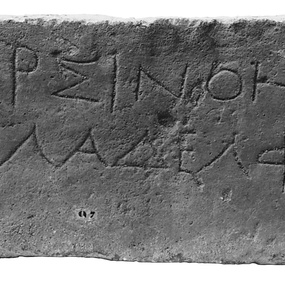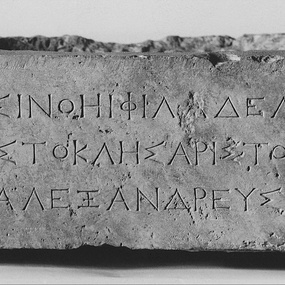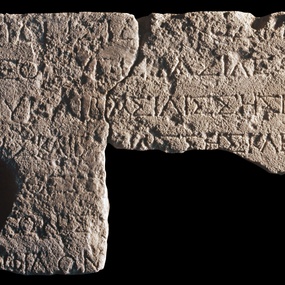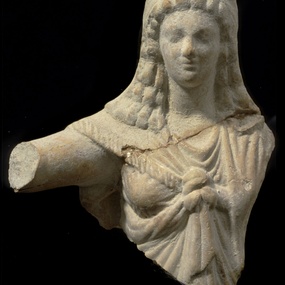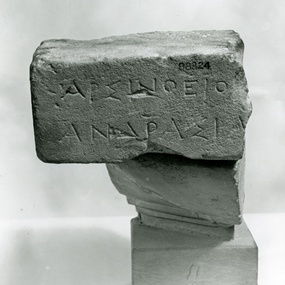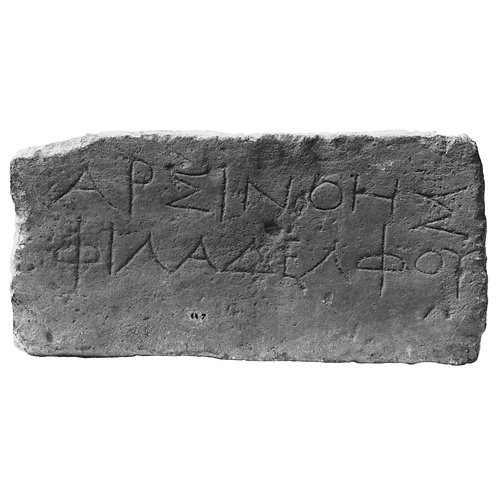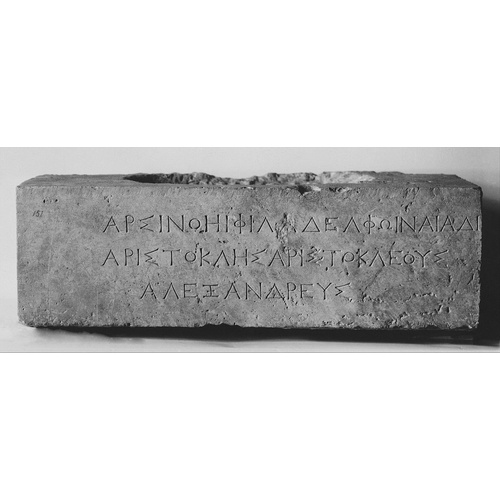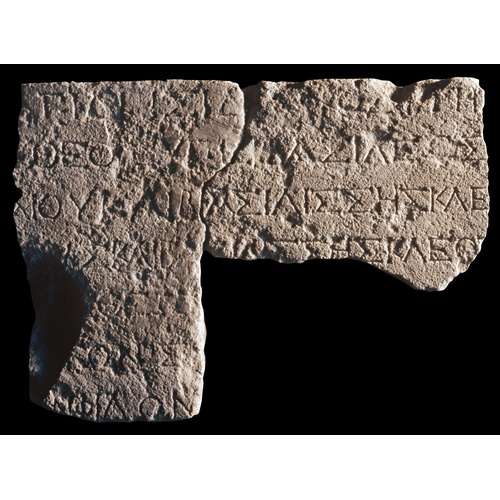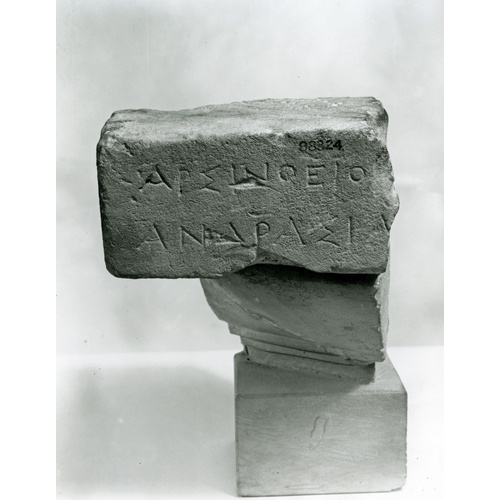Arsinoe Philadelphus is a well-known figure of Hellenistic history.1 She plays an important role for the definition of Ptolemaic queenship and sparks interest from scholars focusing on the dialog with local and, most specifically in Ptolemaic context, with Egyptian traditions, but also whose interested in a more theoretical approach of the invention, the development, and the diffusion of the ruler-cult in Hellenistic Times. In the field of Egyptological studies, the question of the appropriation, of the translations, and of the interpretations of the Ptolemaic cult by the representants of the local traditions and to a wider extent by the local society, has been thoroughly investigated. Moreover, social history of Ptolemaic Egypt still enjoys a leading position in the field of Hellenistic studies (but also more generally in Ancient history), position due, of course, to the rich individual and practical data, the so-called realia, conveyed by papyrological sources. The issue of understanding how local communities understood, received and responded to ruler-cult is much less debated in Greek historical studies, beyond, of course, the questions raised by the political interplay between city and king,2 interplay quite often dominated by the striking and imposing gifts (such as the monumental dedications in world-wide frequented sanctuaries) of the Hellenistic rulers, kings and queens. Ph. Gauthier thoroughly described the inequal, yet real, dialog between civic honors and royal munificence.3 Despite its important role in the definition of the early Hellenistic diplomatic exchequer and in the development of the Ptolemaic administration outside Egypt, Cyprus remains generally outside of the historical debate questioning these interactions.
Background and definitions
Cyprus strategical importance in the Eastern Mediterranean
Cyprus lays in a key-position for everyone willing to install a dominant power in the Eastern Mediterranean.4 Its geographical situation is unique, at a relatively short distance all together from Egypt, Levant, Asia Minor and, little bit more to the West, from the Greek cities of the Aegean. After the death of Alexander the Great, Cyprus gets involved in the Successors wars as both Antigone Monophtalmos and Ptolemaios son of Lagos get directly concerned by the control of the island’s resources in their attempt to control a wider territory: copper mines, timber and suited harbors for their fleets.
Few years later, the Seleucids kings being the new main rivals of the Ptolemies in the Eastern Mediterranean (with the outbreak of the recurrent so-called “Syrian Wars”), Cyprus will again play a very strategical role: as Éd. Will noted, quoting the famous statement of Napoleon about Anvers facing England, Cyprus is actually for the Ptolemies a “gun pointed at Syria’s heart”.5
Cypriot situation before the Ptolemies
Beyond its strategic role – to be taken first literally in its military meaning – and quite passive position during the wars of the Successors, the beginning of the Hellenistic period had multiple impacts on Cyprus. Yet, it does not mean that testimonies show no sign of continuity. We should insist on this primary point: Cyprus is a mere Ptolemaic conquered territory and Alexander did not formally subjugate the city-kings of Cyprus who stayed independent, to a certain point, during the entire Macedonian campaigns in Asia.
By the end of the Classical Period, Cyprus is still divided into a plurality of city-kingdoms deeply marked by the original combination of tutelary gods, kings and cities. The relationship between the people and the king inside Cypriot city-kingdoms is different from any Greek pattern and remains quite obscure. The traditional Athens-centered perception of the Classical polis is not suitable to describe the Cypriot political situation by the end of the so-called “Cypro-Classical period” (ca. 480-330 BCE). The relation between the city and the king deeply marks the Cypriot society and stands as a major originality in regard to the Greek classical Athens-centered standard. Cypriot society is also a multi-faces society,6 with strong political, religious, and cultural traditions. The question of identity, though not always clearly defined, still raises important issues in Ancient studies and enjoys a very special position in Cypriot studies, being at the core of crucial past and present archaeological but also political debates,7
Cyprus in Hellenistic times: military occupation and specific features of a complete integration into the Ptolemaic kingdom
From 295/4 onwards, and after ten years of Antigonid control, Cyprus entered durably into the Ptolemaic empire. As G. Papantoniou showed in his dissertation,8 one figure stands out in Ptolemaic-ruled Cyprus: the strategos. Attested in the inscriptions from the last quarter of the third century onwards, the strategos (military, maybe administrative too, commander of Ptolemaic Cyprus) is getting increased powers during the Hellenistic period. As archiereus, high-priest of the island from the end of the third century, he gets direct access to the religious management of all the Cypriot sanctuaries (with practical access to their benefits), then he becomes, from 142 onwards, and because of the re-orientations of the general strategy of the Ptolemies, the admiral in chief of the entire royal navy. The charge of the strategos, and the original features of his office in Cyprus reflects the importance of the island as a fully integrated part of the Ptolemaic kingdom.9 Chronological facts show striking coherence on that point: Ptolemaic presence in Cyprus suffered no significant rupture during the whole Hellenistic period, except for the lightning strike of Antiochus the Fourth during the 6th Syrian war in 168. On the other side, Cyprus is, with Egypt, the only last territory remaining under Ptolemaic control until the end of the ruling dynasty in 30, and, by the way, until the end of Hellenistic Times.
Methodological issues regarding the history of the relation with the Ptolemies
The relation between Cyprus and the Ptolemies is mainly studied from a military point of view and little attention has been paid to the social and political issues.10 The specificity of the epigraphic documentation from Hellenistic times has been generally overlooked by scholars interested in Greek studies or focused on Ptolemaic, and mostly Egyptian history. However, many features of Cypriot society during the Ptolemaic rule are witnessed by inscriptions.
Ptolemaic ruler-cult in Cyprus
Cypriot inscriptions and the history of Ptolemaic cult
Historical concern for the Ptolemaic cult in Cyprus is given directly by the importance of the epigraphical testimonies. Cypriot inscriptions are major sources for the study of the royal honors, and specifically honorific representation, in Hellenistic times as well as for the study of the royal cult.11 We should insist on the very specific and limiting features of what we call “royal cult”, which provides an additional dimension compared to “royal honors”, as it suggests the expression of a religious bond to the king and/or to the royal family, as well as cult practices institutionalized on behalf of the king and of the royal family.
Therefore, royal cult consists in a specific degree of royal honors. Inscriptions suggesting royal honors rendered to the Ptolemies constitute an important part of Cypriot epigraphy, to such an extent that scholars have tended to define Cypriot epigraphy as mere Ptolemaic honorific epigraphy,12 with no or few concerns for the social and local importance of these texts.
Arsinoe Philadelphus: the invention of a goddess and her place in the creation of the Ptolemaic dynastic cult
Arsinoe the Second is the sister and, from 276/5 onwards, the wife of Ptolemy the Second: together they share the dynastic epithet Philadelphus. Scholars often present a clever queen with great political sense, let’s say a prototype of the Ptolemaic queen, an embryonic and heralding form of the Great Cleopatra.13 Indeed, Ptolemy soon started to suggest the divine status of his sister-queen. He had already deified his late father, giving officially to Ptolemy son of Lagos the dynastic name of Soter (first adopted by the Rhodians in 304), as well as to his mother Berenike. Both were associated to the royal cult under the name Theoi Soteres.14
We do not know with certainty whether the queen has been deified before or just after her death, nevertheless she surely received honors worthy of a goddess. In behalf of Arsinoe, Ptolemy erected the Arsinoeion, few kilometers to the East of Alexandria. In this sanctuary, located on the Zephyrion cape, Arsinoe bears the interesting epithet of Kypris,15 which strikingly links Cyprus to the queen.16
Some other clues regarding the role or Arsinoe for the development of Ptolemaic propaganda can be found in the Ptolemaic coinage: we know for example that Cypriot workshops from Salamis struck golden octodrachm representing Arsinoe with the double cornucopia, a symbol of the prosperity, wealth and benevolence of the Ptolemies. The king also ordered that Arsinoe was to be worshipped in every Egyptian temple as thea synnaos of the local deities.17 This decree may be considered as a founding principle of Ptolemaic dynastic cult, as well as the attribution of the revenues from the apomoira tax to the cult of Arsinoe.
Another feature of Philadelphus’ policy regarding the development of Arsinoe’s cult can be seen in the foundation names of cities under Ptolemaic control. According to K. Mueller, twenty-four cities, including seven cities in Egypt, three in Asia Minor, two in Syria, one in Cyrenaica, two in Crete and three in Cyprus were named or renamed after the Queen’s name.18 Only one of the three Cypriot Arsinoe-cities is surely identified: the ancient capital of the city-kingdom of Marion in the North Western part of the island. Marion is also the only city, for which the literary sources ascribe the destruction to Ptolemaic reprisals during the Successors war around 312.19
The Cypriot inscriptions
The Cypriot data regarding the cult of Arsinoe Philadelphus, again, is of major importance. All regions taken together, Cyprus is the main source of texts attesting the queen’s cult outside Egypt. Around thirty Cypriot inscriptions mention Arsinoe Philadelphus. At least three lists have been drawn up of these texts, the most comprehensive being Anastassiades’ one published in 1998.20 However, one text must be withdrawn from the list (a very fragmentary inscription wrongly considered as an altar for Arsinoe) and two must be added: one is a fragmentary inscribed column found in Amathous in 2007.21 Αnother one, also published in 2007, is a limestone fragment from Kourion.22 This group of inscriptions suggests that Arsinoe received in Cyprus a specific and organized cult with religious practices and devoted priests.
More than half of the stones included in this list simply bear the name of the queen in genitive case (Ἀρσινόης Φιλαδέλφου). This category has attracted attention both from epigraphists and historians: L. Robert gives a famous interpretation of these texts,23 still widely accepted, although alternative hypotheses can still be expressed. Based on the reading of a papyrus from Oxyrrhynchos bearing some parts of Satyros’ text,24 L. Robert’s interpretation links the small sandstone altars to the cult practices of Alexandria, where offerings were made for Arsinoe on private altars “made of sand”, placed by the inhabitants outside of the houses. Following this interpretation, the Cypriot altars may witness the domestic, or at least private cult rendered to Arsinoe.
The Cypriot series of Ἀρσινόης Φιλαδέλφου inscriptions consist of altars or altars’ elements, generally of relative to very modest quality. This collection raises the question of the popularity of the royal cult and allows us to think that the compliance to the official propaganda may have rest on sincere and relatively spontaneous piety, at least to a certain point. In Cyprus the spatial spread of these inscriptions is outstanding. We find them in all the main sites of the island: Arsinoe, Soloi, Ledroi, Chytroi, Kafizin, Idalion, Paphos, Kourion, Salamis and Amathous.
Unfortunately, in most cases the archaeological context of the inscriptions is missing. However, one example discovered on the top of the acropolis of Amathous,25 close to the famous vases, inside the sanctuary of Aphrodite, is more informative. It consists of a plaque with the name in genitive case of Arsinoe, probably belonging to an altar or to a votive room devoted to the cult of the queen (Fig. 1).
If the importance of the Ἀρσινόης Φιλαδέλφου inscriptions is outstanding, they shouldn’t be considered regardless of the whole Cypriot testimonies. Taken together they bear clues showing that Arsinoe received a separated and organized cult in Cyprus, with religious practices and specific staff.
Other texts document the specific features of the Cypriot cult of Arsinoe. The first one26 is a Phoenician dedication from Idalion to the god Reshef-Mikal, the counterpart of the Greek Apollo in Cyprus, by a woman called Batshilem, on behalf of her grand-children.27 The text is very precisely dated by the mention of a triple chronological system: the civic calendar of the city of Kition beginning in 311 (Idalion passed under the administration of the neighbor city during the Cypro-Classical period), the regnal date of Philadelphus and the eponymous priesthood of the priestess of Arsinoe and the canephoros Amatosiris. All these indications lead to the year 254. This text is of remarkable importance as it gives the identity of the priestess of Arsinoe and reasonably proves that the cult was fully institutionalized in Cyprus. Moreover, it conveys strong evidence regarding the early Ptolemaic policy towards the local society and suggests the existence of a subtler relation between the Cypriots and the Ptolemies. Royal cult, and especially the experiments of Philadelphus’ reign may be one of the main elements in the development of this relation. On the other hand, Cyprus may have been one fertile ground for the invention of the Ptolemaic policy as well. In Egypt, we know that the policy of the first Ptolemies towards the representants of local cults was also quite flexible. In addition, as the Cypriot inscriptions of the Hellenistic period give very little information regarding civic organization, the mention of the eponymous priestess of Arsinoe is of very big value. In a period of great changes such as the third century, the spread of Arsinoe’s cult and its penetration into civic life may be a sign, yet fragile, of the attention paid by the Ptolemies to the dialogue with local society.
This organization of Arsinoe’s cult may reflect some of the practices known in Ptolemaic Egypt, which can’t be a real surprise since Cyprus was integrated in a very intense and unique way into the Ptolemaic kingdom. This integration, well known for military and political matters, extends to cultural and social facts. The inscriptions witness this phenomenon in different ways.
To stay on the cultic field, two more texts from Cyprus’ hinterland show the flexibility and the spread of Arsinoe Philadelphus’ worship. On a pottery sherd belonging to the offerings to the Nymph, the deity worshipped on the peak of Kafizin (close to modern Nicosia), we find an unusual dedication to the “Philadelphus Nymph”. No matter how we interpret the role of Ptolemaic administration in the economy of the linen production involving the worshippers frequenting the sanctuary, yet the penetration of Arsinoe’s influence inside a secondary countryside sanctuary is striking.28
On the other hand, the addition of the noun Naias on a fine statue base from Chytroi (Fig. 2), another countryside site of the Mesaoria plains, reinforces the hypothesis of a widespread recognition of Arsinoe divine attributes, allowing the deified queen to fully enjoy the status of thea synnaos of the local deities. Both the nymph of Kafizin and the Naiad of Chytroi are suitable counterparts for a marine deity such as the Arsinoe Kypris created in Alexandria. The marine character of the goddess, if it helps ensuring her association to Aphrodite Pontia, Euploia or Akraia, also serves the Ptolemaic propaganda. Kallikrates of Samos, the famous admiral of the Ptolemaic fleet, is one of the main promoters of Arsinoe’s cult: he stands beside the royal couple in a dedication from Samos, while another inscription from Olympia records his dedication to the Philadelphoi rulers.29 And at a time when Ptolemaic power is still expressed on the sea through a strong presence in the Aegean, the cities named after the queen Arsinoe are generally established on the coasts. Alexandrian poets have celebrated this specific attribute of the goddess Arsinoe, in a way suggesting that primarily the deified queen had been conceived as a figurehead of the Ptolemaic fleet.30
The expression synnaoi theoi appears in one Cypriot inscription. On the acropolis of Amathous, an anonymous Ptolemaic official offers a dedication to Sarapis, Isis-Aphrodite and the associated gods in the third quarter of the 2nd century31 (Fig. 3). Among the theoi synnaoi, Arsinoe Philadelphus may enjoy a well-favored position. Four inscriptions from this city mention the name of the queen. The eminent position of Amathous for the cult of Aphrodite32 beside Paphos, the capital of Ptolemaic Cyprus, may explain the preeminent presence of Arsinoe in the Southern city of Cyprus. In Amathous, on the south slope of the acropolis, archaeologists discovered a huge amount of terracotta figurines dated to the 2nd century and among which Isis and Aphrodite (both the Greek Hellenistic version and the traditional local version of the goddess) were both represented33 (Fig. 4). Till today, this collection stands as one of the biggest concentrations of Isiaca outside Egypt. Both archaeological material and inscriptions attest to the dynamism of cultic transactions in Ptolemaic Amathous, from the Southern part of the city where lies the public buildings to the top of the acropolis.
A small fragment from the sanctuary of Apollo-Resheph in Idalion witnesses the penetration of Arsinoe’s cult into the sanctuary of a male deity and echoes the mention of the canephoros, again in Idalion.34
The stone, a kind of naiskos architrave or of a very high abacus (Fig. 5), bears the fragmentary inscription:
Ἀρσινοεῖο[ν ……]
ἀνδράσι α[………]
Even incomplete, the text clearly mentions the existence of a dedicated space for the cult of Arsinoe. The dimensions of the stone suggest that it consisted of a votive room rather than of a large building. The presence of Arsinoe inside the sanctuary of Apollo-Resheph in Idalion provides a unique testimony of the association of the deified queen with a male deity. We know thanks to an inscription from unknown provenance mentioning Onesitimos son of Ariston that male priests were also taking part in the institutionalized cult of Arsinoe.35 As Onesitimos is also in charge of the gymnasium while being priest of Arsinoe, the hypothesis of a close connection of the royal cult with civic public life may be confirmed.
I will evoke a last document, unfortunately very fragmentary, and that has to be read very cautiously. Often interpreted as an official copy of a letter from Ptolemy Philadelphus mentioning the application of the apomoira tax in Cyprus,36 this inscription may positively be one of the most explicit proofs of the integration of Cyprus into the Ptolemaic fiscal system. However, the mention of the apomoira, the tax applied on 1/6 of the production of Egyptian vineyards and orchards, does not necessarily mean that this tax was to be used for the upkeep of the dynastic cult like this was the case in Egypt .37 The connection of this inscription to the cult of the queen, precisely found in the Cypriot city of Arsinoe, is tempting but not conclusive.
Towards a redefinition of Ptolemaic power in Cyprus
This brief overview of the Cypriot evidence of the cult of Arsinoe Philadelphus may bring still untapped elements to a more comprehensive approach of the Ptolemaic administration of Cyprus. Inscriptions provide many information on the dialog established between the Ptolemies and the local society, beyond the image, partially conveyed by the historians, of a superficial list of Alexandrian officials serving in Cyprus. Ptolemaic rule over Cyprus, yet, is first a military occupation based on the strategical importance of the island and of its resources. But the Ptolemies seem to have paid attention to the local traditions and history, using the local symbolic repertoire as well as the local elite to define original ideological patterns and to invent a flexible policy suitable outside Egypt.
Cyprus, strongly influenced by royal traditions from at least the Cypro-Classical period, may have been considered as a favorable ground for the spread and the development of the royal cult. The relation between the king and the deity may be of specific importance in this case. Before the dawn of the Classical period, Cypriot kings were indeed enjoying a favored religious position as priests and relatives of the gods. Their connection to the Wanassa provided them with an ambiguous status, reinforcing their political authority with religious power. This feature brings the Cypriot city-kingdoms closer to Eastern political and religious traditions such, obviously, as the Phoenician ones.38 On the other hand, the Hellenistic – and for a big part, Alexandrian – reading of Greek mythical history tends to use and reuse the local symbolic system. The emergence of the Paphian goddess as a Hellenized Aphrodite and the emergence of her sanctuary at Paphos as the showcase of Ptolemaic power is significant, as well as the creation of Arsinoe Kypris, a new goddess made from a derived, translated version of the Great Goddess of Cypro-Archaic and Cypro-Classical periods.
